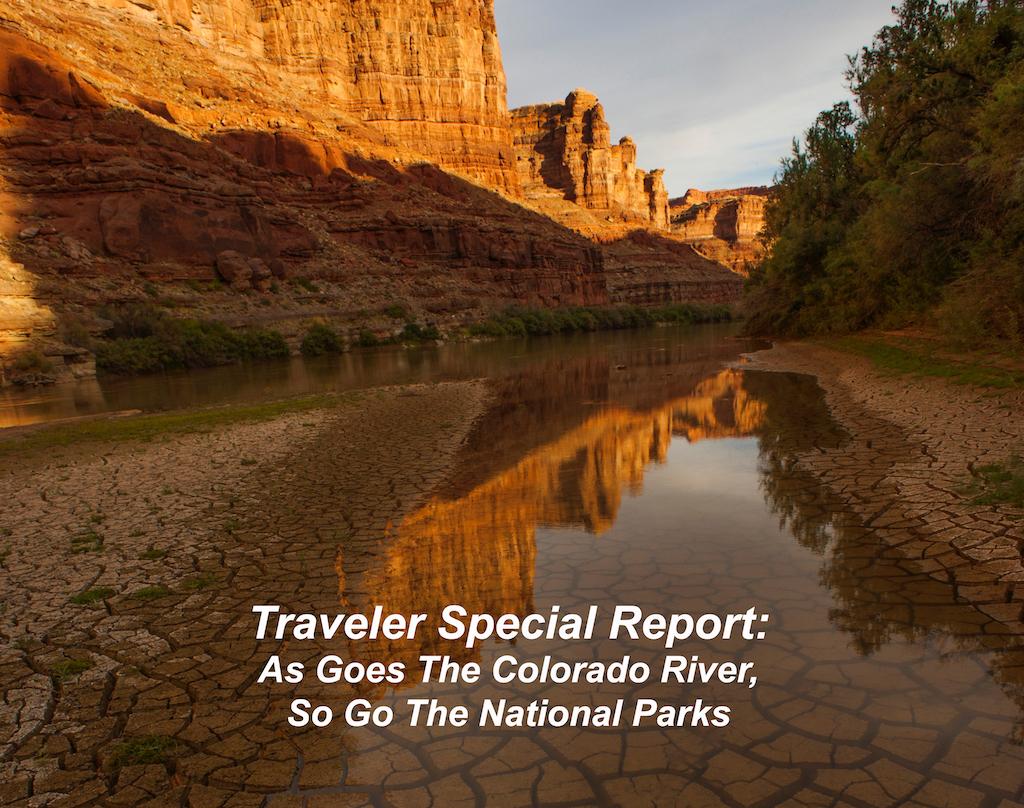
Once Grand: How Climate Change And Invasive Species Are Altering The Colorado River
By Kurt Repanshek
A warming climate has been linked to human activity around the world, and has affected the Colorado River System as well. The impacts are substantial, from reduced water flows, threats to indigenous species and the influx of new invasive species along the river system.
The Colorado River System drains more than 244,000 square miles; about one-eighth of the United States. Over 40 million people rely upon its waters. Along its way to the Sea of Cortez, the Colorado and its tributaries pass through Dinosaur and Colorado national monuments, as well as Arches, Canyonlands, and Grand Canyon national parks, and the Glen Canyon and Lake Mead national recreation areas.
Unfortunately, overdevelopment, over-commitment, and overuse of these Western waters impact ecosystems and communities. While national parks were created to preserve these lands for the enjoyment of future generations, the threats to the Colorado River System carry significant natural resource and economic impacts, not just to the parks and their gateway towns but also impacts to the web of life dependent on the system.
Besides providing water to southwestern urban centers, the river basin also supports a rich, recreational industry, of river running, pleasure boating, hiking, camping and fishing. The river corridors are also vaults of cultural, archaeological, and paleontological artifacts that tell ancient stories. But dams, diversions, climate change, and invasive species are now affecting this complex and much-used resource.
“The Colorado River is a great example of how we’ve built a system based on some assumptions. It’s over allocated between the Upper and Lower basin states,” said Jon Jarvis, director of the National Park Service under President Obama. “I know a lot about the Colorado River; I was very, very involved in a number of issues on it.
“I think there’s going to be significant challenges to all of the parks along there. Particularly with this administration, which obviously is going to lean more on the side of the water users rather than the conservation values that are derived from keeping water in the river, particularly through the Grand Canyon and the other parks,” he added.
National Parks Traveler sent Patrick Cone to investigate the impacts of climate change on Canyonlands National Park and Glen Canyon National Recreation area. From Green River, Utah, to Moab, Utah, and on to Page and Flagstaff in Arizona he listened to Park Service personnel, river runners, residents, business owners and other stakeholders who rely on a healthy Colorado River for their existence talk about its health.
In the coming weeks Traveler will present a series of articles, videos, and podcasts, supported by a grant from The Water Desk, an independent journalism initiative based at the University of Colorado Boulder’s Center for Environmental Journalism, on the health of the Colorado River and its impacts on Canyonlands and Glen Canyon. The first installment, coming next Sunday, February 16, looks at the river and how it impacts Canyonlands National Park.
Take a close look at how our changing climate is impacting the Colorado River’s health and the parks along its course.
National Parks Traveler, a 501(c)(3) nonprofit media organization, depends on reader and listener support to produce stories such as this one and other coverage of national parks and protected areas. Please donate today to ensure this coverage continues.



Comments
Sounds like a great public service to do this journalism.
"We don't inherit the Earth from our parents. We borrow it from our children." David Brower The question is not whether we need more commerce and development. The question is whether we need to destroy an ecoystem that, if left complete and robust, supports life - including our own. Is the increased stress on the entire Colorado River System's rivers, canyons and water more important INSTEAD of a few beautiful, quiet, and wild places to get away to think and cleanse our soul, to hike, float or camp?